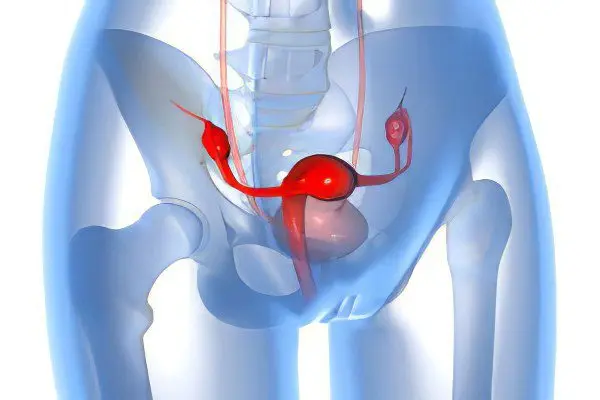Contents
Ovarian cyst in women is a fluid-filled protrusion that forms on the surface of one or both of a woman’s ovaries, usually from a follicle. Anatomically, the cyst looks like a thin-walled cavity in the form of a sac. The size of this formation ranges from a few to 15-20 millimeters in diameter.
In 90% of cases, the cyst is functional, or follicular. The reason for its occurrence is “Overmaturation” of the follicle – a special formation in which the female germ cell develops. The thing is that each menstrual cycle, one of the two ovaries normally produces one egg, which, when mature, must exit the follicle into the fallopian tube, and the ruptured follicle becomes corpus luteumproducing the hormone progesterone. This is the essence of ovulation.
A cyst forms when the follicle does not rupture, but fills with fluid and remains in the ovary. Sometimes its size begins to create inconvenience, blocking the exit into the fallopian tube and causing discomfort. But most often, the follicular cyst resolves during the next menstruation, leaving no visible traces.
A functional cyst can also be provoked by the expansion of the corpus luteum. It has the same principles of formation, and is called a corpus luteum cyst.
Another type of functional cyst is a hemorrhagic cyst, when blood vessels rupture inside the follicle or corpus luteum and a hemorrhage occurs, accompanied by pain.
There is also a dysontogenetic cyst, which is formed as a result of disorders in the growth and development of the ovaries during puberty, as well as a cyst tumor, which gives rise to ovarian cancer.
Signs and symptoms of an ovarian cyst in women

Usually, an ovarian cyst does not make itself felt and decreases until it disappears completely in a few monthly cycles. You can find it with the help of ultrasound of the pelvic organs. Only occasionally the appearance of a cyst is marked by one or more of the following symptoms:
pain in the lower abdomen, sometimes very strong and sharp;
heaviness, pressure in the pelvic area;
prolonged pain during menstruation;
irregular monthly cycle;
nausea, vomiting after intense training or sexual intercourse;
pressure during emptying of the bladder or rectum;
pain in the vagina, accompanied by bloody discharge.
At the same time, there are signs that, accompanied by the above symptoms, indicate that it is time to see a doctor:
temperature over 38 °C;
weakness and dizziness;
copious discharge during menstruation;
increase in the volume of the abdomen;
facial hair growth in a male pattern;
intense thirst with copious urination;
abnormal blood pressure;
uncontrolled weight loss;
a palpable lump in the abdomen;
Tests and tests for ovarian cysts
For the diagnosis of this pathology use:
1. CT (computed tomography) and MRI (magnetic resonance imaging).
2. Transvaginal ultrasound examination.
3. Laparoscopy, with associated removal of the cyst upon detection.
4. Hormone analysis: LH and FSH, estrogen and testosterone.
5. Puncture of the pocket of Douglas (posterior fornix of the vagina) with suspicion of internal bleeding due to rupture of the cyst.
6. Analysis for the CA-125 tumor marker to exclude ovarian cancer.
7. Pregnancy tests are also mandatory, not only because the treatment of pregnant and non-pregnant women is different, but also to rule out an ectopic pregnancy, the symptoms of which are similar to those of an ovarian cyst.
Causes of ovarian cysts in women

Unfortunately, the physiological mechanisms of the appearance of ovarian cysts are not yet fully understood. Most doctors are inclined to believe that pathology takes place with hormonal disruptions, inflammatory processes and apoptosis (programmed cell death).
According to statistics, the formation of an ovarian cyst occurs in 7% of sexually mature women, including after menopause. The appearance of this pathology is associated with the menstrual cycle and does not depend on the age and health of the woman, so it is logical that after menopause, an ovarian cyst is a very rare occurrence. However, the effect of a cyst on a woman’s body is different in nature and depends on many factors. For example, cysts that appear due to taking drugs that stimulate the ovaries, despite the large number, disappear in several menstrual cycles without consequences.
In the case when the cyst is reinforced by risk factors: stress, genital infections, artificial termination of pregnancy, obesity, smoking, early menarche, late onset of menopause, possible consequences such as tumor processes, decreased reproductive function up to infertility, miscarriage.
Therefore, we can conclude that the risk of cysts increases due to:
irregular menstrual cycles;
the onset of early menstruation (before the age of 11 years)
hormonal disorders (eg, hypothyroidism);
occurrence of cysts in the past
treatment of breast cancer with the drug tamoxifen;
operations on the organs of the reproductive system;
smoking;
obesity;
infertility.
Armen Eduardovich Ter-Hovakimyan, Doctor of Medical Sciences, will tell you about the causes of cysts:










goeie dag
ek was tans by dokter met n erge pyn in my regterkant se buik hule 2 ytgvind dis n sist is dar enige behandeling vir dit want dis baie pynlik hule mynet pynpille gegee
Is dar n moontlikhyd dan dit kan kanker veroorsaak ? Ek het so klomp vrae